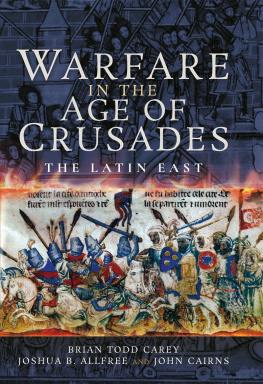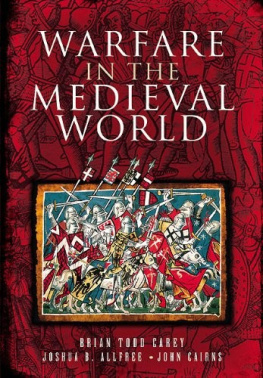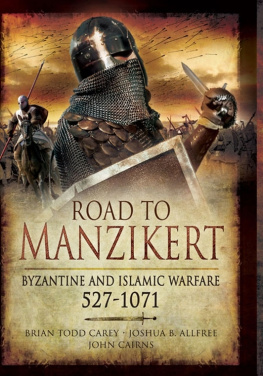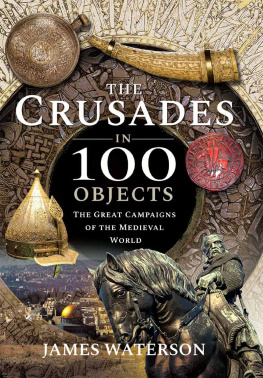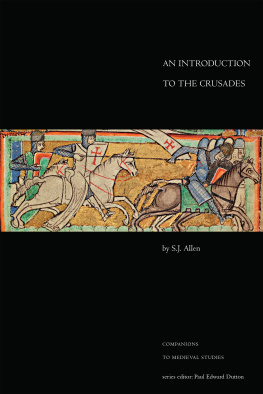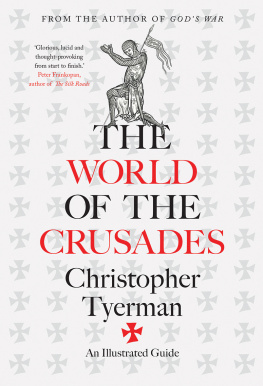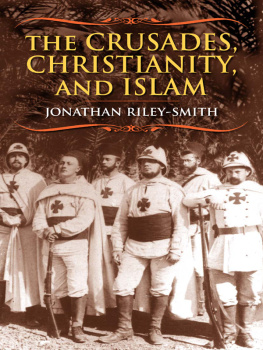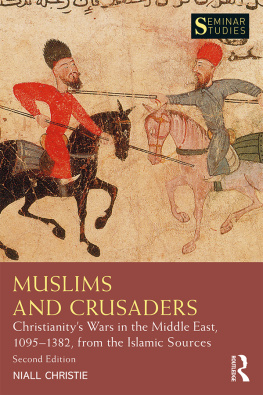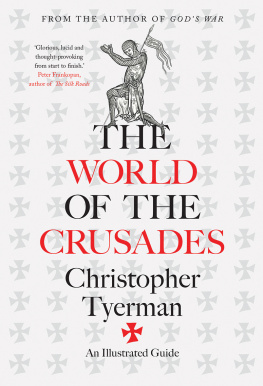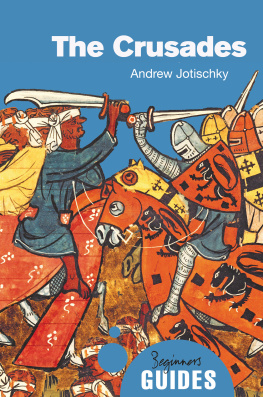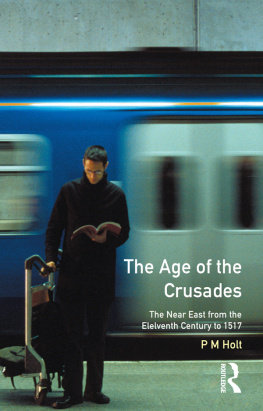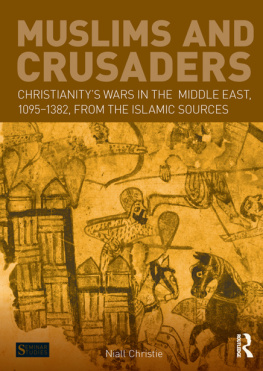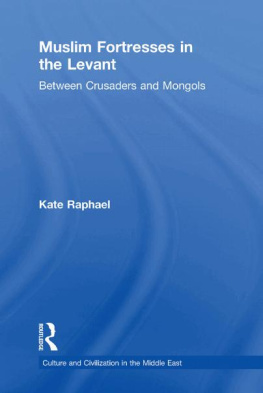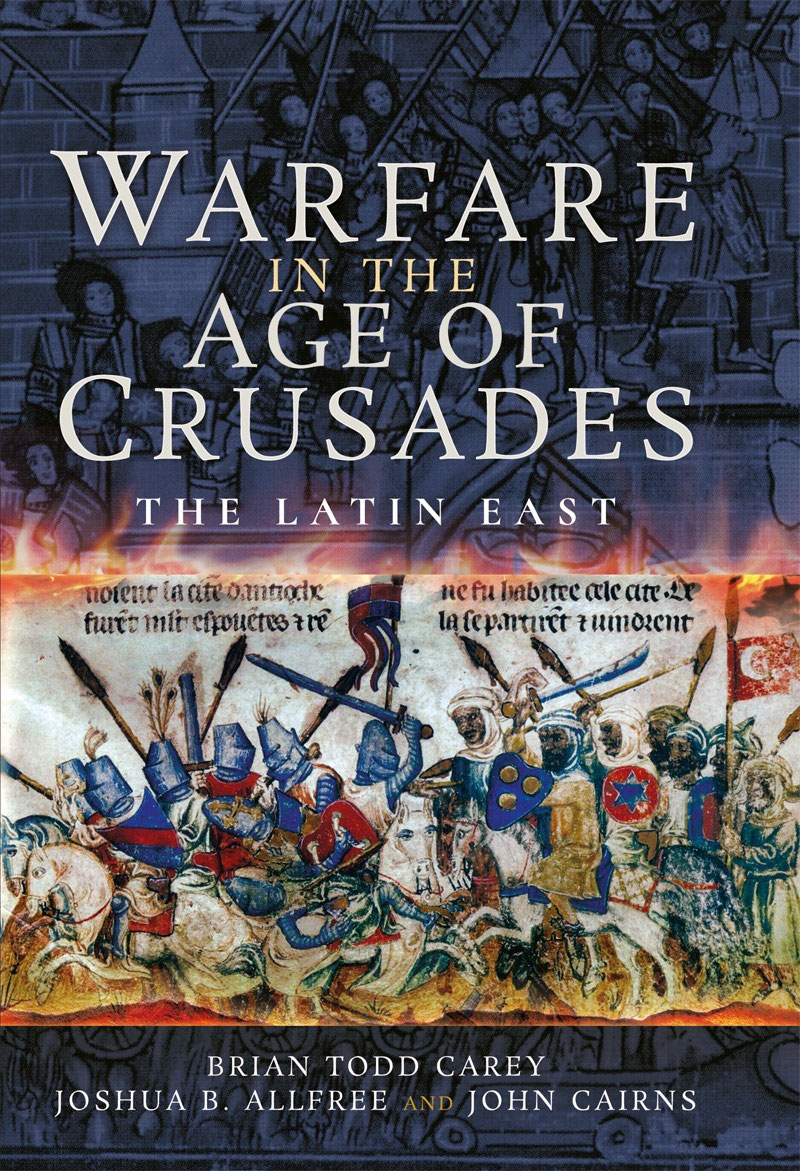Warfare in the
Age of Crusades
Warfare in the
Age of Crusades
The Latin East
Brian Todd Carey, Joshua B. Allfree and John Cairns
First published in Great Britain in 2022 by
Pen & Sword Military
An imprint of
Pen & Sword Books Ltd
Yorkshire Philadelphia
Copyright Brian Todd Carey, Joshua B. Allfree and John Cairns 2022
ISBN 978 1 52673 021 3
EPUB ISBN 978 1 52673 022 0
MOBI ISBN 978 1 52673 022 0
The right of Brian Todd Carey, Joshua B. Allfree and John Cairns to be identified as Authors of this work has been asserted by them in accordance with the Copyright, Designs and Patents Act 1988.
A CIP catalogue record for this book is available from the British Library.
All rights reserved. No part of this book may be reproduced or transmitted in any form or by any means, electronic or mechanical including photocopying, recording or by any information storage and retrieval system, without permission from the Publisher in writing.
Pen & Sword Books Limited incorporates the imprints of Atlas, Archaeology, Aviation, Discovery, Family History, Fiction, History, Maritime, Military, Military Classics, Politics, Select, Transport, True Crime, Air World, Frontline Publishing, Leo Cooper, Remember When, Seaforth Publishing, The Praetorian Press, Wharncliffe Local History, Wharncliffe Transport, Wharncliffe True Crime and White Owl.
For a complete list of Pen & Sword titles please contact
PEN & SWORD BOOKS LIMITED
47 Church Street, Barnsley, South Yorkshire, S70 2AS, England
E-mail: enquiries@pen-and-sword.co.uk
Website: www.pen-and-sword.co.uk
Or
PEN AND SWORD BOOKS
1950 Lawrence Rd, Havertown, PA 19083, USA
E-mail: Uspen-and-sword@casematepublishers.com
Website: www.penandswordbooks.com
Contents
Preface
Preface to Both Volumes
In 2012 Pen and Sword Books published our Road to Manzikert: Byzantine and Islamic Warfare, 5271071, a treatment of martial relations between Byzantium and Arabic and Seljuk Turkish Muslim civilizations culminating in the battle of Manzikert on 26 August 1071. The Seljuk sultan Alp Arslans (r.106372) victory over Emperor Romanus IV Diogenes (r.106871) that dreadful day opened Anatolia to Islamization and Turkish settlement over the next decade, resulting in the loss of most of the peninsula to Islamic expansion. A generation later, Byzantine Emperor Alexios I Komnenos (r.10811118) requested military aid from the papacy to assist in the recovery of Anatolia and perhaps regain the Levant and Jerusalem for Christendom. He was also seeking to rein in the Norman threat to his western frontier through diplomacy with the Holy See. Byzantine emperors had used Catholic mercenaries before in their wars to secure or expand their borders, and it is likely Alexios was asking for a few hundred knights and their men-at-arms to assist in a sustained offensive deep into Asia Minor. It is doubtful that he anticipated the tens of thousands of Catholic soldiers and pilgrims that descended on Constantinople in 1096, the opening phase of Europes Levantine crusades. In many ways, our Road to Manzikert should be seen as the first volume of a three-volume treatment of warfare in the eastern Mediterranean, a prologue to the 200-year Catholic occupation of Syria and Palestine that witnessed extraordinary cooperation between church and state, between Pope, king and Holy Roman Emperor over the duration of the high middle ages (c. 1000c. 1300). However, the genesis of crusading ideology began earlier and closer to home in 711 in the already centuries-old conflict in Iberia between the small Catholic kingdoms in the north and al-Andalus, the Islamic-controlled areas of what would become Spain and Portugal and continued through the late middle ages (c. 1300c. 1500) with missionary wars in southern Spain, the Baltic and the Balkans against the rising Muslim Ottoman Empire.
Europes age of crusades is the topic of this two-volume work, one that attempts to give the reader a survey of this clash of civilizations and cultures from a military history perspective. It also endeavours to discuss the evolution and differences between the two forms of medieval holy war jihad and crusade, and how these religious doctrines were used by religious and political leaders to recruit for and justify war with the unbelievers, whether infidel, pagan or heretic. Volume one, Warfare in the Age of Crusades: The Latin East, traces the origins and course of the so-called nine numbered crusades first called to arms by Pope Urban II (p.108899) in November of 1095 and ending with the fall of Acre, the last Catholic stronghold in Palestine, in May 1291. Volume two, Warfare in the Age of Crusades: Europe, focuses on missionary war on the continent against perceived enemies of Catholicism, the Muslim infidel in Iberia, Slavic, Balt and Finnic pagans in the Baltic region, and Cathar heretics in southern France and Hussite heretics in Bohemia. Together, both volumes endeavour to highlight the role of significant commanders and the battles and campaigns they fought in Europe and the eastern Mediterranean over this half-millennia of medieval history. Special attention is paid to the military tactics and martial technologies used by belligerents and the unique institutions born in this period of holy war. Crusading took place in several theatres of operations stretching from Iberia to Mesopotamia, from Tunisia to the Gulf of Finland, requiring western European knights to adapt to numerous fighting styles. Catholic soldiers faced the Senegalese Black Guard and Berber armies on the plains of Castile, fought campaigns in the dead of winter against Prussians, Livonians and Russians, and rode against a multitude of mounted archers from the Eurasian steppe, most notably Seljuks Turks, Mamluks and Mongols, in their defence of the Latin East. In the Catholic world, monastic military orders like the Templars, Hospitallers and Teutonic Knights aided both Pope and prince, defending conquered regions in the Holy Land, Iberia and the Baltic, while in the Islamic Near East, mamluk slave-soldiers first served their Arabic masters, then usurped them to become rulers themselves. Both knight brother and slave-soldier were faithful warriors of God, cruel and effective instruments of religious expansion. And throughout the crusading era, new military technologies were introduced, including improvements in fortification and siegecraft, arms and armour, horse breeding and barding, and during the fourteenth and fifteenth centuries, gunpowder artillery and handguns.
Even taken together, these two volumes do not attend to be comprehensive in their coverage, but instead provide the reader with an introduction to crusading warfare from a predominantly military history perspective. Like their predecessor, Road to Manzikert, these monographs utilize numerous regional and strategic maps to assist the reader in geographical context, while the strength of these works remain the multiphase tactical maps designed to explain the origins, course and outcome of important battlefield engagements during the crusader era. As before, primary source commentary is provided to present differing perspectives on these campaigns, and hopefully bring the reader closer to the events. Modern analysis supported by current scholarship is presented as well, however, in the end, the conclusions presented are entirely ours and ours alone.

